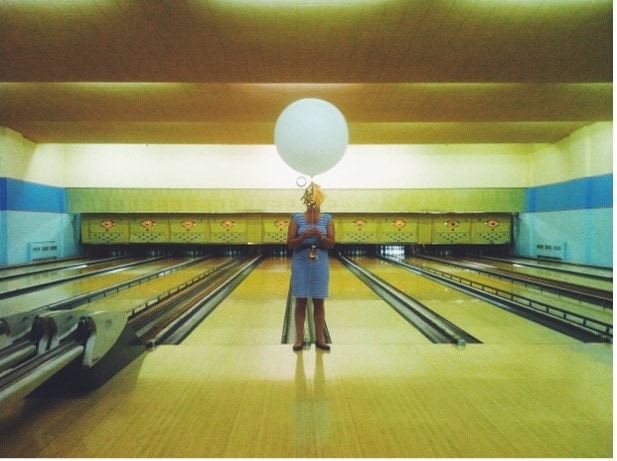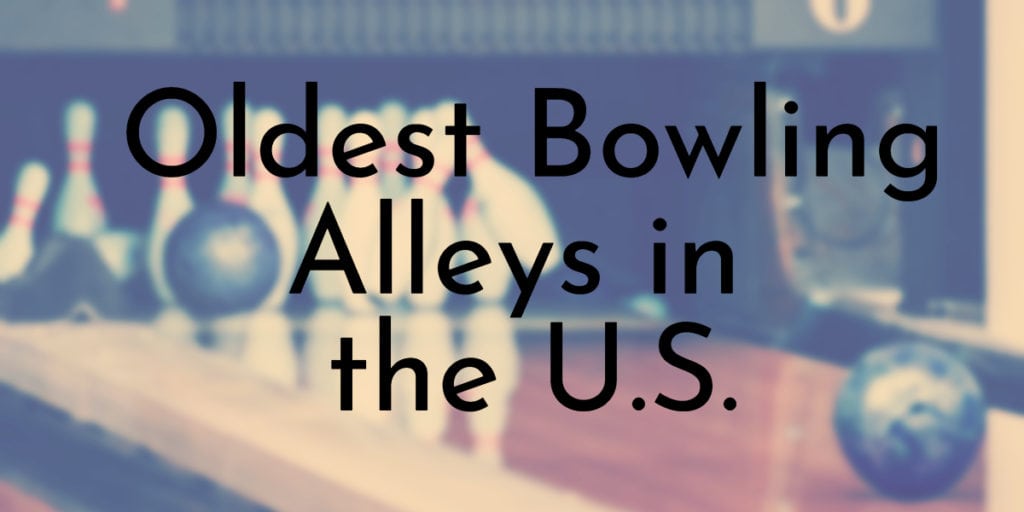Although the oldest modern bowling alley in the U.S. was built only about 200 years ago, there’s evidence that the game existed as long ago as 3200 BCE. Since then, bowling has evolved a lot—moving from manual functionality into full automation. European settlers from England, Germany and the Netherlands popularized the game in America and, as more people played, brick and mortar establishments developed for easier gameplay, gambling and socializing.
Read below to learn more about the history of bowling in the U.S. and, maybe, where to plan your next birthday party.
10. Highland Park Bowl
Year Opened: 1966
Location: Los Angeles, California
Number of Lanes: 8
Cost: $40 – $70

The building that houses Highland Park Bowl opened in 1927 as a doctor’s office, pharmacy, music store and recreation space. Nearly 40 years later, an Italian immigrant named Joseph “Mr. T” Teresa purchased the building and converted it to Mr. T’s Bowl. He redid the entire building, changing the ceilings and paint. From then on, the building changed hands and transformed into a music venue with less of a focus on bowling. Eventually, 1933 Group, an organization dedicated to restoring LA’s historic buildings, restored the original interior and refurbished the lanes.
Did you know?
During prohibition, patients would visit the building’s doctor’s office for a prescription for whiskey that they could then take down to the pharmacy.
9. Boutwell’s Bowling Center
Year Opened: 1959
Location: Concord, New Hampshire
Number of Lanes: About 13
Cost: $5.00 per regular game/ $35.00 for glow bowling

Boutwell’s Bowling Center is a local mainstay of Concord, NH, first established in 1959. In the beginning, there weren’t many lanes and players had to keep score using a pen and paper. It changed owners in 1972 and remained within the same family for 40 years—having sold in 2014 to someone the previous owner knew for over two decades. Today, Boutwell’s is twice the size it was during its initial opening, a result of a remodel done in the 1970s after another alley went out of business. The building still has its shag rugs, though, offering a vintage touch.
Did you know?
Boutwell’s was one of the first bowling alleys to switch to electronic scoreboards in 1991.
8. Lower Columbia Bowl
Year Opened: 1957
Location: Astoria, Oregon
Number of Lanes: 12
Cost: $2.50 – $4.00

Built in the late 50s, this bowling alley offers much of the usual fare, including bowling, of course, lottery, arcade games and a pro shop. Setting Lower Columbia Bowl apart from the competition is its appearance in 1980s classic film “The Goonies.” In the opening scene, one of the characters watches a car chase from the bowling alley window and then spills his milkshake.
Did you know?
The same owners have operated Lower Columbia Bowl for 16 years.
7. Bryant Lake Bowl and Theater
Year Opened: 1936
Location: Minneapolis, Minnesota
Number of Lanes: 8
Cost: $2.75 – $4.50 per game

Bryant Lake Bowl and Theater has humble beginnings, with the building originally opening in 1926 as a Ford garage to fix Model Ts. Ten years later, it was purchased and redone as a bowling alley, offering recreation to the city’s inhabitants. In 1959, Minnesota Bowling Hall of Famer Bill Drouches purchased the space, adding in automatic lanes like the ones in use today.
Did you know?
According to his obituary, Bill Drouches bowled 12,300 games in his lifetime and ran Bryant Lake Bowl and Theater for over 30 years.
6. Mahall’s
Year Opened: c.1930
Location: Lakewood, Ohio
Number of Lanes: 20
Cost: $30 for 1 hour, $50 for 2 hours and $60 for 3 hours

Although Mahall’s opened in 1924 as a dance hall, the bowling alley wasn’t added until the 1930s. In fact, Mahall’s went through a few changes since its inception. After its initial opening, it also added a confectionary store and a barbershop. After prohibition, its lower level was converted to fit four bowling alleys, while the second floor hosted 10 lanes and a bar/restaurant. Today, it boasts 20 lanes.
Did you know?
The Mahall family owned Mahall’s until 2012 when it was sold to Kelly Flamos, Joe Pavlick and their immediate families.
5. Atomic Bowl Duckpin
Year Opened: 1928
Location: Indianapolis, Indiana
Number of Lanes: 4
Cost: $40 per hour

Opened in 1927 as a bowling and billiards space under the name Fountain Square Recreation, this bowling alley closed in the late 1950s. Thankfully, it was revived in 1993 under the name Atomic Bowl Duckpin and restored the lanes restored to their 1930s glory. Today, patrons can play on four lanes in the basement and enjoy the café area.
Did you know?
Duckpin bowling is a slight variation on the typical game, using smaller pins and balls—making it more challenging. Each person has three bowls each turn.
4. Solvay Recreation Alleys
Year Opened: 1923
Location: Syracuse, New York
Number of Lanes: Unknown
Cost: Unknown

Nearly 100 years old, Solvay is a charming bowling alley located in Upstate New York. True to its centennial nature, it doesn’t have an official website or online presence, keeping it more of a local secret. The alley has faced some hardships over the years, including 2014 when the owner had to lay off the entire staff to keep the space afloat—a result of newer, shinier competition.
Did you know?
In 1950, Solvay was the first bowling alley in Syracuse to get automatic pinsetters.
3. Garden Bowl
Year Opened: 1913
Location: Detroit, Michigan
Number of Lanes: 16+
Cost: $10 – $35 an hour

One of the oldest bowling alleys to have more than two lanes, the original Garden Bowl featured 10 lanes on the first floor and a billiards room for high profile tournaments on the second. In the 1920s and 30s, Garden Bowl was at the center of Detroit’s hustle and bustle. The building had so many patrons that they redid the second floor in 1926, removing the billiards space to make room for 12 more lanes. It was also a hotspot for betting, with several out of towners coming in to play in a “neutral” zone. Overall, Garden Bowl was known for being a place of recreation and relaxation for Detroit’s working class.
Did you know?
Today, Garden Bowl has extended into the building next door, offering patrons more lanes, pool tables and a restaurant.
2. Holler House
Year Opened: 1908
Location: Milwaukee, Wisconsin
Number of Lanes: 2
Cost: $4 per game

Built in 1908 in Wisconsin’s historically Polish district, Holler House is a classic tavern that maintains its vintage appearance. If patrons make their way downstairs, they’ll discover America’s oldest certified bowling alley. With only two lanes, this alley is easy to keep 20th century standards. Both lanes feature pin boys to reset the pins after each turn and are oiled by spray can. Rather than computer screens, bowlers keep score by hand.
Did you know?
The bar’s second level features several hanging bras, a tradition that began over 50 years ago. At one point, authorities asked the bar to take them down because of they were a fire hazard, but, through public pressure, Holler House was able to put the bras back where they belonged (above a bar, apparently).
1. Roseland Cottage
Year Opened: 1846
Location: Woodstock, Connecticut
Number of Lanes: 1
Cost: $2 – $15

No longer playable, America’s oldest bowling alley is in Woodstock, CN at Roseland Cottage, the former summer home of Henry and Lucy Bowen. A mansion by modern standards, this gothic revival-style home features pink siding and intricate roof details. Inside tourists will find elaborate, colorful carpeting, artwork and stained glass—almost all unchanged since the home’s inception. The bowling alley is simpler, made of light-colored wood—but either, having a personal bowling alley of any sort is quite decadent.
Did you know?
Roseland Cottage housed four U.S. presidents as guests.











